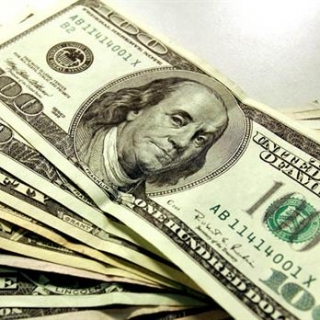


The U.S. dollar was steady early on Thursday following its plunge to a 3-1/2-year low and then forceful rebound as traders grappled with the ramifications of the Federal Reserve's measured rhetoric on further interest rate cuts.
The Fed reduced rates by a quarter point on Wednesday, as expected, and indicated it will steadily lower borrowing costs for the rest of this year, initially sending the dollar plunging.
However, Fed Chair Powell characterised the day's policy action as a risk-management cut in response to the weakening labour market, but the central bank does not need to rush easing.
The Fed's closely watched dot plot of policy expectations predicted a median 50 basis points of additional cuts over the remaining two policy meetings this year, but only one additional reduction in 2026.
"The revised forecasts highlighted the degree of uncertainty that remains over the outlook," said Elliot Clarke, head of international economics at Westpac.
"The timing and scale of the forecast rate cuts also point to lingering risks for inflation."
The dollar dropped to the lowest since February 2022 at 96.224 against a basket of major peers immediately after the rate decision, but sprang back vigorously to be as much as 0.44% higher on the day at 97.074.
The euro was steady at $1.1818 early on Thursday, after a round trip to the highest since June 2021 at $1.19185 in a knee-jerk reaction to the Fed announcement.
Sterling was flat at $1.3626 after briefly leaping to the highest since July 2 at $1.3726 on Wednesday.
The Bank of England announces its own policy decision later on Thursday, and is widely anticipated to keep rates at 4%.
Official figures on Wednesday showed British inflation at an annual 3.8% in August, in line with a Reuters poll, reinforcing market expectations that further rate cuts are unlikely soon.
Economists polled by Reuters earlier this month expect one more rate cut by the end of the year.
The dollar edged down 0.08% to 146.815 yen in the latest session, after weakening as much as 0.67% to the lowest since July 7 at 145.495 yen overnight before slingshotting back.
The Bank of Japan is widely expected to refrain from hiking rates on Friday, although markets price in a quarter-point increase by end-March, with about 50% odds of it happening within this year.
The spotlight is on an October 4 vote where the ruling Liberal Democratic Party will elect a new leader to replace outgoing Prime Minister Shigeru Ishiba, who is stepping down following a bruising defeat in upper house elections.
New Zealand's dollar weakened 0.49% to a one-week low of $0.5935 after data showed the country's economy shrank more than expected in the second quarter.
The Aussie dollar was steady at $0.6655 ahead of the release of jobs data later in the day.
The greenback was steady at C$1.3772 after the Bank of Canada on Wednesday cut rates by a quarter point to a three-year low, as expected, citing a weak jobs market and less concern about underlying pressures on inflation.
Source: Reuters
The dollar headed for its worst week since late July on Friday (October 3rd) as the US government shutdown heightened uncertainty, while the yen weakened from this week's high as traders considered th...
The dollar weakened near a one-week low on Thursday as traders weighed the impact of the US government shutdown, while poor jobs data raised expectations that the Federal Reserve would cut interest ra...
The U.S. dollar slid to two-week lows against the yen on Wednesday after data showed private-sector jobs in the world's largest economy contracted last month, boosting expectations the Federal Reserve...
The dollar index fell to its lowest level in the session as U.S. corporate payrolls unexpectedly fell in September and traders increased bets on two interest rate cuts by the Federal Reserve this year...
The US dollar continued to weaken, approaching its lowest level in a week as uncertainty over a possible US government shutdown looms. If the US government does shut down, the release of key data, suc...
The S&P 500 closed mostly flat on Friday, the Dow Jones extended its record run, rising 240 points finisheing at 46,758 after briefly surpassing 47,000 during the session, while the Nasdaq slipped 0.3% as the US government shutdown entered its...
Federal Reserve (Fed) Bank of Dallas President Lorie Logan struck a nervous tone on Friday, warning that despite a rapidly-weakening labor market, a lot of potential policy moves could accidentally spark another round of renewed inflationary...
If it just seems like the first Friday of the month wasn't the same without being able to pore through the Bureau of Labor Statistics' hotly watched monthly jobs report, don't worry. You probably didn't miss much. While the BLS has gone dark with...
 The bottom line: The release of official US data is delayed because the federal government is currently in shutdown. While the budget hasn't been...
The bottom line: The release of official US data is delayed because the federal government is currently in shutdown. While the budget hasn't been...
 Asian markets opened higher, following a global rally that pushed world indexes to new records, despite the US entering its first government...
Asian markets opened higher, following a global rally that pushed world indexes to new records, despite the US entering its first government...
 Wall Street's indexes closed at record highs on Wednesday, buoyed by strong sector performance and optimism that the US government shutdown will be...
Wall Street's indexes closed at record highs on Wednesday, buoyed by strong sector performance and optimism that the US government shutdown will be...
 European stocks extended gains on Friday, with the STOXX 50 up 0.4% and the STOXX 600 rising 0.3% to fresh record highs, as optimism around...
European stocks extended gains on Friday, with the STOXX 50 up 0.4% and the STOXX 600 rising 0.3% to fresh record highs, as optimism around...